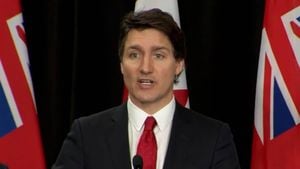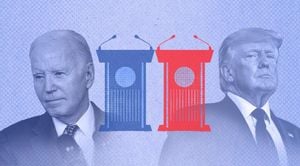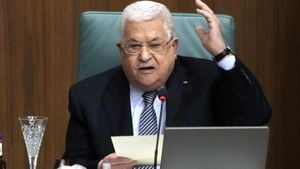The human rights situation in Iran continues to deteriorate as the government accelerates its use of the death penalty, raising alarm among international observers. Recent reports highlight multiple executions carried out within just days, including the harrowing execution of seven individuals at Ghezel Hesar prison, three of whom were Afghan nationals. This incident points to the broader issue of capital punishment rampant within Iran, which Amnesty International notes as one of the highest rates of execution globally.
According to the HENGAW Organization for Human Rights, the individuals executed included Ajmal Azizi, sentenced for ‘premeditated murder’, and two others convicted on charges of rape. Alarmingly, 50 Afghan nationals are documented to have been executed this year alone, stirring concerns about the treatment of foreign nationals within Iran’s judicial system. The plight of those facing the death sentence, particularly among minorities and vulnerable populations, has drawn condemnation from various human rights organizations, underscoring the disproportionate nature of capital punishment practices.
Adding to the distressing narrative, Hamed Darvishi and Mostafa Rouzbehani were executed for drug-related offenses just days prior to the execution spree, bringing significant attention to the Iranian government’s intensified crackdown on drug crimes. The Iran Human Rights NGO reported the executions as part of a troubling trend, where the number of drug-related executions surged to 471 last year alone, constituting about 84% rise compared to previous years. Detainees with drug offenses often receive harsh sentences without fair trials, fueling outrage among advocates for human rights.
Reports from the National Council of Resistance of Iran echo these concerns, denouncing the state’s approach to dissent, with Maryam Rajavi, president-elect of the council, characterizing the execution trend as part of Supreme Leader Ali Khamenei’s strategy to suppress public dissent and maintain tight control over the population. Each execution, as Rajavi points out, exacerbates the grief and suffering of families, creating ripples of despair across communities.
The international community has been called upon to respond to these violations. Human rights advocates insist on the necessity of unified action to condemn the regime’s practices and support the civil society within Iran, emphasizing the indispensable role of monitoring and enforcing human rights standards. Advocacy efforts are gaining traction, with campaigns like the “No Execution Tuesdays” rallying support against the state-sanctioned killings, urging individuals to object to the continued normalization of execution policies.
For years, the UN has cited multiple human rights violations committed by Iran, including arbitrary detentions of journalists and the suppression of free speech. The latest figures indicate at least 811 individuals executed between October 2023 and October 2024. This alarming data draws stark attention to systematic issues involving silencing dissent and maintaining autocratic control.
Further complicity arises with the plight of Jamshid Sharmahd, the Iranian-German dissident whose death was recently reported by the Iranian judiciary. Accused of terrorism and plotting against the government, the circumstances surrounding his arrest and alleged execution drew international ire, prompting protests from Germany and raising questions about the legitimacy of Iran’s judicial processes.
This environment of fear is even creating rifts among Iranian expatriates. With many political prisoners remaining behind bars, including prominent figures like Nobel laureate Narges Mohammadi, family members of the imprisoned have raised their voices for justice, seeking transparency for judicial proceedings and improved prison conditions.
Meanwhile, international reactions are becoming increasingly heated. Following the reported execution of Sharmahd, Germany’s harsh response included the closure of its Iranian consulates and recalling ambassadors. The call for action highlights both the ethical responsibility of nations to protect human rights and the urgency with which these violations must be addressed on the global stage.
Iran’s governmental agencies, on the other hand, continue to deny allegations pertaining to human rights violations. Judiciary representatives maintain the country’s legal system is impartial and independent, notwithstanding mounting evidence to the contrary. Family advocacy groups and human rights organizations are adamant about the need for international oversight and intervention, demanding accountability for Iran’s numerous breaches of human rights regulations.
These developments represent just the tip of the iceberg amid larger domestic discontent driven by economic mismanagement, oppressive state policies, and relentless repression of dissenters. The Iranian regime's comprehensive use of capital punishment serves as both an ominous warning to potential dissidents and as fuel for the growing demands from within for drastic change.
With wrongful convictions and politically motivated trials being commonplace, the situation for Iranian citizens continues to look bleak. Advocates are calling for the international community to increase pressure on Iran, emphasizing the necessity for transparency, accountability, and the cessation of executions.
Describing the state of human rights under the current government as not just dire but systematic, the pressing concerns raised by activists are evident. Every execution and suppression of dissent constitutes not only individual tragedies but compiles within, presenting formidable challenges to the fabric of human rights globally.



